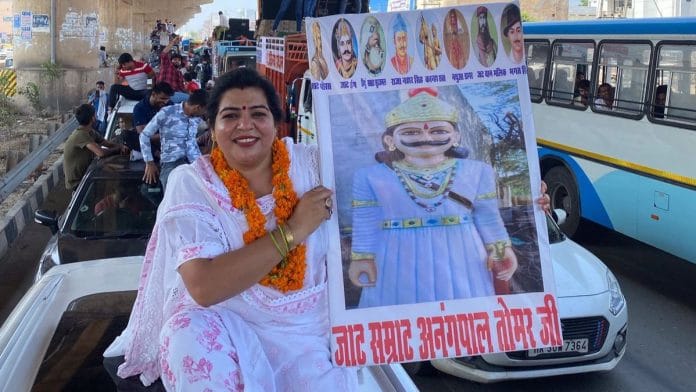New Delhi: More than a year has passed since Anang Tal lake, located half a kilometer away from the Qutub Complex in New Delhi’s Mehrauli, was declared a monument of national importance. But till now, no one has taken care of it. The lake, with a history of about a thousand years, tells the story of the Tomar dynasty, which is credited for first establishing the city of Delhi.
This heritage site has turned into a ruin and the majority of the population in New Delhi hardly knows the origin story of the city’s name. Reviving the legacy of Tomar king Anangpal Tomar has become part of Narendra Modi government’s project to decolonise the city’s history, lessen the over-emphasis on its Mughal past and reclaim its Hindu origins. The ongoing archaeological excavation at Indraprastha site at Purana Qila is one such endeavour.
The National Monument Authority (NMA) has organised several heritage walks on Anang Tal over the years and a national seminar on Anangpal Tomar. The heritage walk organised on the occasion of World Heritage Day on 18 April 2022 was led by Director-General of National Museum and former Additional Director-General of Archaeological Survey of India BR Mani.
“I excavated the site under ASI. There is still some water left in Anang Tal but the mini lake has shrunk over time,” Mani had said last year.
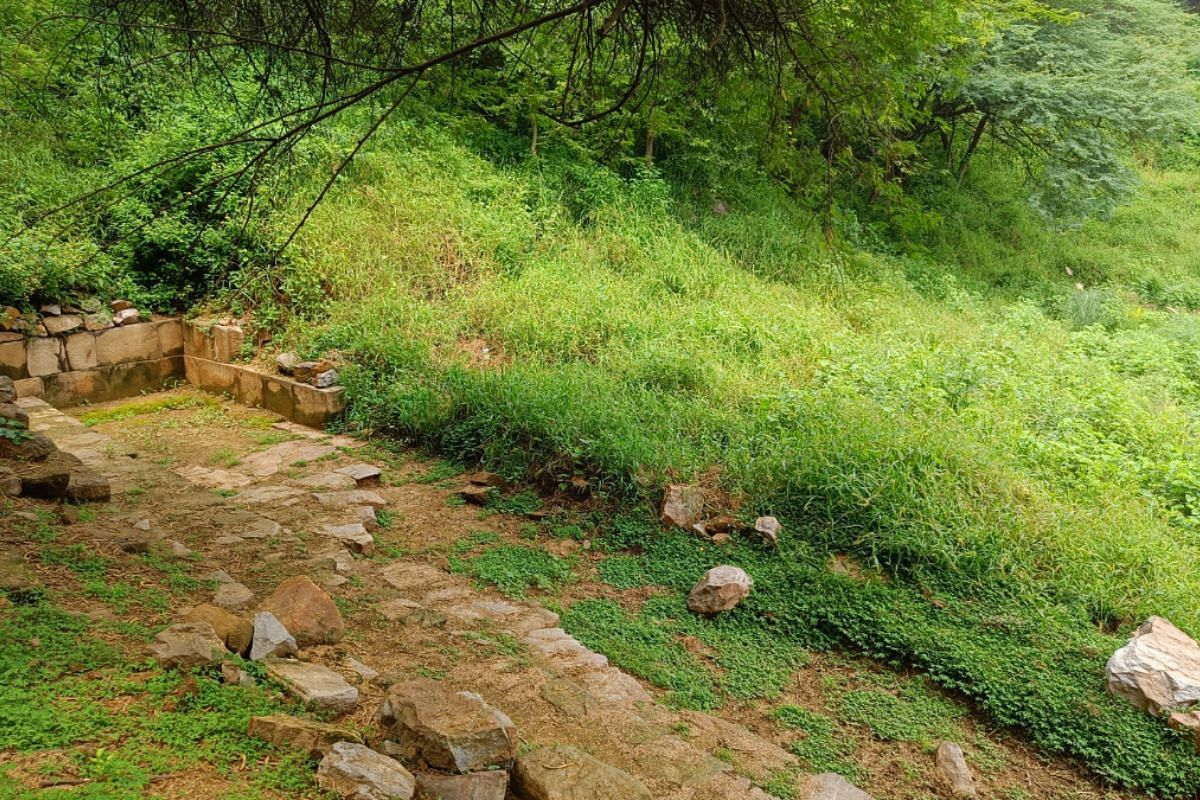
He explained to heritage walkers that unless the lake is declared a protected monument, there won’t be any trace left of it in the coming years.
The dream project of Tarun Vijay, who was the chairman of NMA, has been to commemorate Delhi’s Hindu-Sikh history, which was overshadowed by the Islamic invaders.
Vijay said that chief of the Economic Advisory Council to the Prime Minister Bibek Debroy had also visited Anang Tal. “PMO is also aware of this,” he said.
As the chairman of NMA, Vijay visited Qutub Minar and found that its history is linked to Anangpal Tomar.”We found a huge pond near Qutub Minar, which was built by Anangpal Tomar. Both ASI and DDA were informed about it. After two years of effort, it was declared a national monument. At present, the pond is a sewer. This can be a big source of water for Delhi,” said Vijay.
“The restoration of this small traditional water reservoir in volumetric terms would be like a drop in the ocean in Delhi’s pursuit for water security,” wrote urban water bodies expert Ritu Rao in Down To Earth.
A few meters away from Qutub Minar, Anang Tal still exists in the dense forests of Sanjay Van. Hundreds of monkeys are seen frolicking on the narrow paths of the forest reserve spread across 783 acres, while peacocks and nilgai roam. And in the middle of all this, wooden signboards made by the Delhi Development Authority (DDA) show the way to Anang Tal.
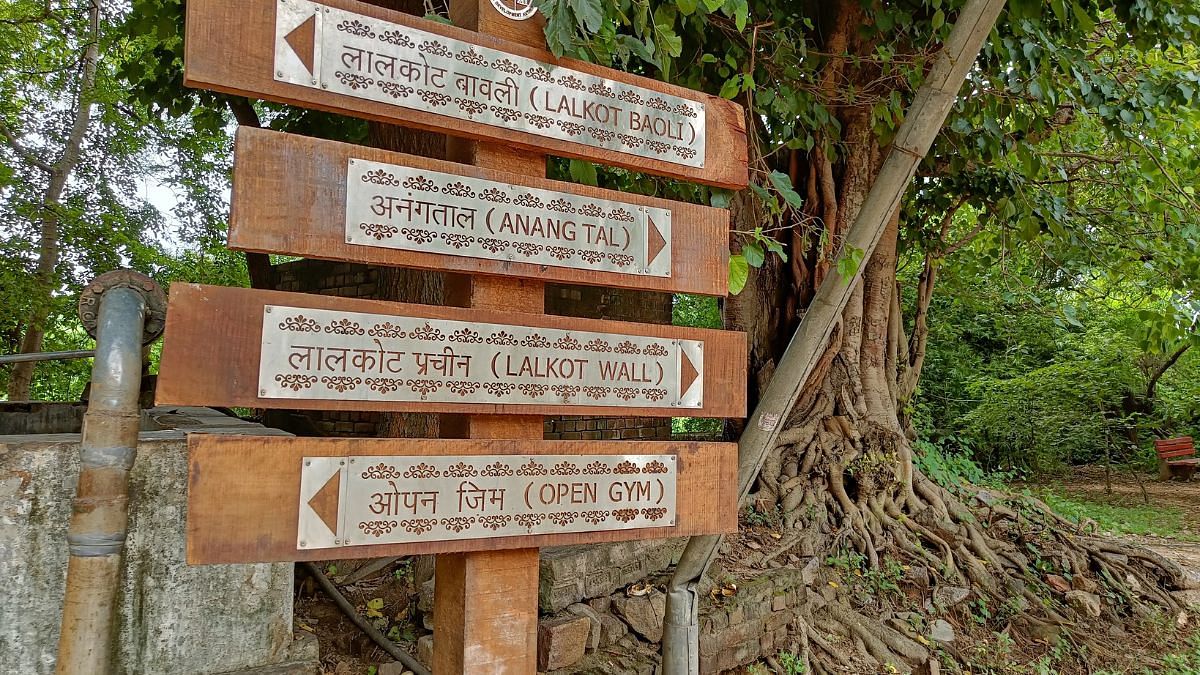
However, the sight of the lake only evokes disappointment. Only green grass and stones are visible in the entire pond. And Kikar trees surround it.
Anang Tal was declared a monument of national importance through a gazette notification issued by the Ministry of Culture on 22 August 2022. According to the notification, “The central government is of the opinion that the ancient mound, including Anang Tal, Tehsil Mehrauli, district South Delhi, National Capital Territory Delhi… is an ancient site and remains of national importance.”
According to the DDA signboard, the 11th century Tomar ruler is also credited to have inhabited the first city of Delhi, called Dhillikapuri, around his citadel of Lal Kot, the earliest fort known in the city.
The Tomar dynasty ruled parts of present-day Delhi and Haryana between the 8th and 12th centuries and Anangpal Tomar founded Dhillikapuri around 1052 AD, according to an inscription found on the Iron Pillar.
Vijay said that in 2021, the national seminar on Anangpal Tomar was organised in the ASI auditorium with experts from 12 universities, including Jawaharlal Nehru University, University of Delhi, Punjab University, Indian Institute of technology Kanpur, Banaras Hindu University.
According to a brief report of the seminar, the establishment of the first city of Delhi by the Tomar king is a glorious chapter in the city’s history. Anangapal II ruled over Delhi, which was then referred to as Dhilli or Dhillika.
“People had come from all over the country. Information from Jain literature to the Lal Kot excavation was discussed. People have forgotten the man who built Delhi. Tomar was the first to establish Delhi as a fortified city, then gradually this city expanded,” said Mani, who was the convener of the seminar.
Also read: Delhi was ‘Dhillikapuri’, Qutub Minar was Sun pillar — pro-Hindutva press on capital’s Hindu past
Yet to be restored
Last year, between April and June, everyone, from the Union Minister of Culture to the top official of DDA, visited the Anang Tal. Union Minister Arjun Ram Meghwal asked officials to finish the work of cleaning the lake and declare it a monument of national importance immediately. He was surprised to see the dilapidated condition of a heritage site that signifies the beginning of Delhi.
Lieutenant Governor of New Delhi, VK Saxena also instructed that the lake be brought back to life with fresh water within two months.
But it has been over 14 months and no restoration work has been done.
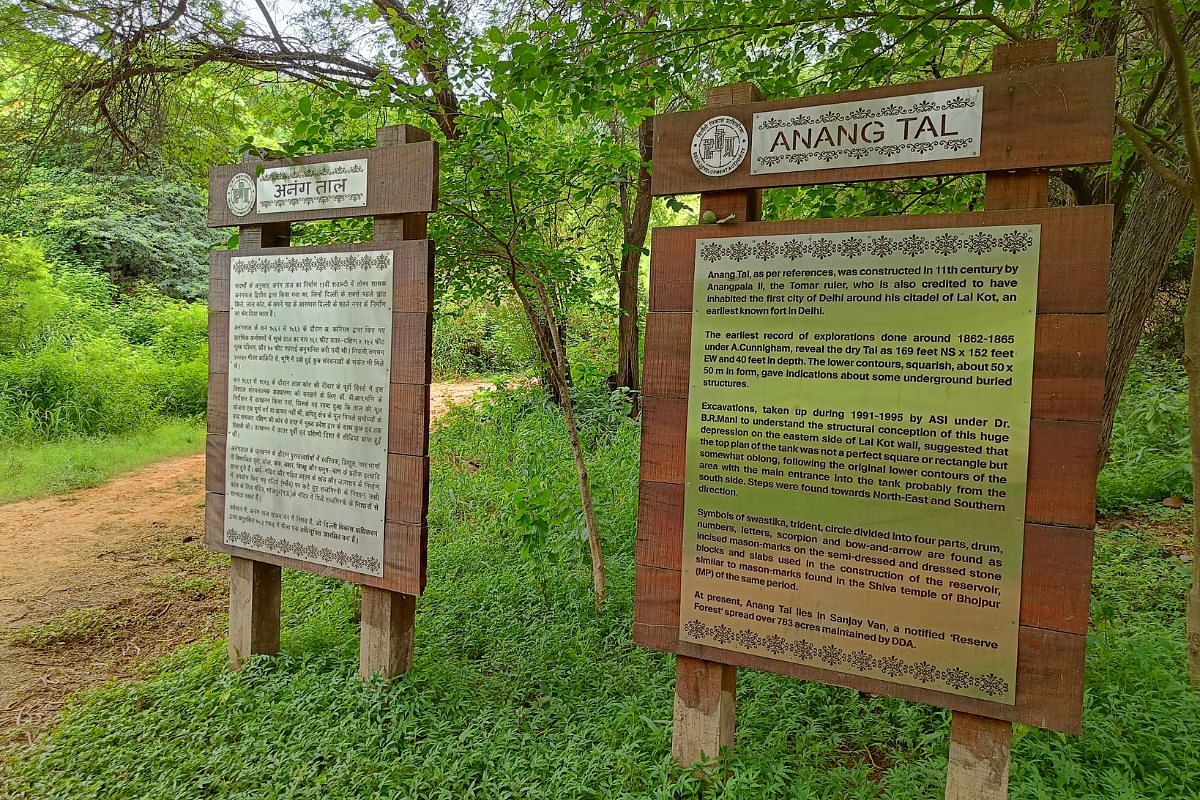
“We had visited Anang Tal and wanted to know its national importance. Since this land comes under the jurisdiction of DDA, therefore, the first responsibility of cleaning it is on us. But even after some efforts, it has not started. We are trying to work on it soon,” said a senior official from the DDA team that visited Anang Tal in May 2022, on condition of anonymity.
The gazette notification also invited objections or suggestions. Within two months of central government’s proposal to declare Anang Tal as a protected site, three objections, one by an NGO and other by two individuals, were filed.
Officials of the ASI confirmed that due to the land ownership and revenue records, the restoration work had been halted.
ASI’s Joint Director-General TJ Alone also said that the issue of land ownership has come up in Anang Tal case, that’s why the protection work could not be started. ” It is the responsibility of the state government and DDA to settle it. Only after that the ASI will start restoration work,” he said.
We cannot deny the historical importance of Anang Tal–TJ Alone
Alone believes that Anang Tal holds a significant place in Delhi’s history. “We cannot deny the historical importance of Anang Tal,” he said.
Although discussions regarding Anang Tal and Anangpal Tomar may have been rekindled among the masses in the last few years, the ASI had begun the work of exploring their history long ago. Mani had carried out excavations for four years since 1992 at Lal Kot and Anang Tal, with the objective of knowing the settlement pattern around the fort and to confirm the structural conception of the huge depression on the eastern side of the mound, known as Anang Tal.
Excavation results suggested that the top plan of the tank was not a perfect square or rectangle but somewhat oblong. Mani also conducted Ground Penetrating Radar survey at the lake in 1994-95.
Mani has written extensively about this in his book titled Delhi, Threshold of the Orient: Studies in Archaeological Investigations, which was published in 1998. “It has been said that water for making mortar for the construction of Alai Minar was brought in the time of Alauddin Khalji from adjoining Anang Tal,” he wrote.
According to the book, the remarkable feature of the tank was the presence of incised mason marks on the semi-dressed and dressed stone blocks and slabs, which were used in the construction of the reservoir.
Among the mason marks, the symbols such as swastika, trident, circle divided into four parts, drum, numbers, letters, scorpion, and bow and arrow have been identified. These marks resemble the mason marks found in the temple of Bhojpur, Madhya Pradesh, from the same period, as well as and also the reused stone slabs in the Quwwat-ul-Islam mosque near Qutub Minar.
Till now people consider only Mughal history as the history of Delhi. The history of the Rajput period is not visible anywhere–BR Mani
According to Mani, Anang Tal was a huge source of water for the royal palace, whose depression was 50*50 meters. “When we excavated, we found evidence of a permanent pond being made of stone. And there are Nagari letters on those stones which are from the 11th century, so it becomes clear that it was made by Anangpal Tomar and archaeological evidence also confirms this,” he said.
At present, the items found during the excavation are kept at ASI’s Delhi Circle. Mani said that a museum can be built near Anang Tal itself so these items can be kept there. “Till now people consider only Mughal history as the history of Delhi. The history of the Rajput period is not visible anywhere,” he said.
In addition to the proposed museum, there are plans for a significant statue of Anangpal Tomar to be erected in the heart of Delhi, which aims to further commemorate his contributions to the city’s history.
In 2021, the Modi government formed a ‘Maharaja Anangpal II Memorial Committee’ to popularise the legacy of the Tomar king. Minister for Agriculture and Farmers’ Welfare Narendra Singh Tomar is the current chairman of the committee and Vijay is its convener.
“A huge statue of Anangpal Tomar is to be installed in the center of Delhi. Also, his statue is to be installed near Anang Tal. And talks are going on with the LG to include a chapter about Anangpal Tomar in the curriculum of Delhi schools,” said Vijay. He added that Minister of Petroleum and Natural Gas and Housing and Urban Affairs Hardeep Singh Puri has been requested to assign a location for the statue.
Also read: Purana Qila is being dug up again. ASI wants to reach all the way to the Mahabharata era
Anangpal Tomar’s legacy
NMA has been trying for the last two years to bring back the glory of pre-Islamic monuments destroyed by foreign invaders, Ministry of Culture had said in a statement, last year.
“Injustice against the makers of history by the writers of history is being corrected now,” PM Modi had said in 2021.
Anangpal Tomar died in 1081 AD. He ruled Delhi for 29 years, 6 months and 18 days.
..leftist writers had captured history and narrative in such a way that their basic objective was to suppress the history of Hindu pride–Tarun Vijay
“After Independence, leftist writers had captured history writing and narrative in such a way that their basic objective was to suppress the real history, the history of Hindu pride. And thus, it was shown that Delhi was ruled by Khilji, Tughlaq, Iltutmish,” said Vijay.
Vijay argued that Delhi was made a city of tombs to claim that no one existed before the ‘invaders’ who are buried in them.
“Delhi is not a city of tombs and graveyards but it’s a great city of joy, art, culture,” he added.
Last year, Rashtriya Swayamsevak Sangh (RSS) mouthpiece Panchjanya published a cover story titled: Delhi Kiski. It claimed that Delhi was Dhillikapuri, established by a Hindu king and alleged that the city’s true history had been obfuscated by Leftist historians.
It is wrong to compare the importance of Delhi during Tomar’s time and during the Sultanate and Mughal era–Swapna Liddle
Historian Swapna Liddle also said that the name of Delhi was coined during the reign of Anangpal Tomar. Before that, the city was called Yoginipur. She added that when Anangpal Tomar settled in Delhi, it didn’t have much political importance.
“At that time, it was not a very big city. Its importance increased during the Sultanate period. Then came the Mughals and British periods, and Delhi became a very big city. And the importance of Delhi increased in a way which was not there before,” Liddle said.
However, Liddle doesn’t believe that Delhi’s history was deliberately suppressed or there was some conspiracy.
“It is wrong to compare the importance of Delhi during Tomar’s time and during the Sultanate and Mughal era,” she said.
Vijay pointed out that Alexander Cunningham, the first director-general of ASI and a British engineer who founded the organisation in 1861, had uncovered through his excavations that Delhi was once known as Dhillikapuri. The excavations discovered stone inscriptions in Palam, Nariana and Sarban during the construction of New Delhi after 1912.
But there’s another famous theory about the name of Delhi—the dhilli killi story. According to Mani’s book, it is possible that the city got its name from the Iron Pillar (killi), which remained loose (dhilli) after being refixed by the Tomar King.

Cunningham has cited the inscriptions, “Killi to dhilli bhai, Tomar bhaya mat hin”. It means, “The pillar has become loose, the Tomar has become disillusioned, according to Mani’s book.
Also read: Amarmani Tripathi’s release ties many ends—Yogi’s prison friendship, Brahmin-Thakur vote bank
Rajput, Gurjar, Jat
As efforts are being made to take the legacy of Anangpal Tomar to the people, a caste conflict is breaking out because of it.
The Tomar community lives in parts of Madhya Pradesh, Delhi, Haryana and western Uttar Pradesh.
Rajputs, Jats and Gujjars are claiming the Tomar king’s legacy and they all celebrate his birth anniversary on 8 August every year in a grand ceremony. On 20 July, hundreds of women and men took out a rally for the first time in Palwal and claimed that the Tomar king belonged to the Jat community.
On 8 August this year, a huge golden colour statue of Anangpal Tomar sitting on the horse was unveiled in Delhi’s Chauhan Patti village. In the last few years installing Anangpal’s statue in villages became a trend among Tomars.
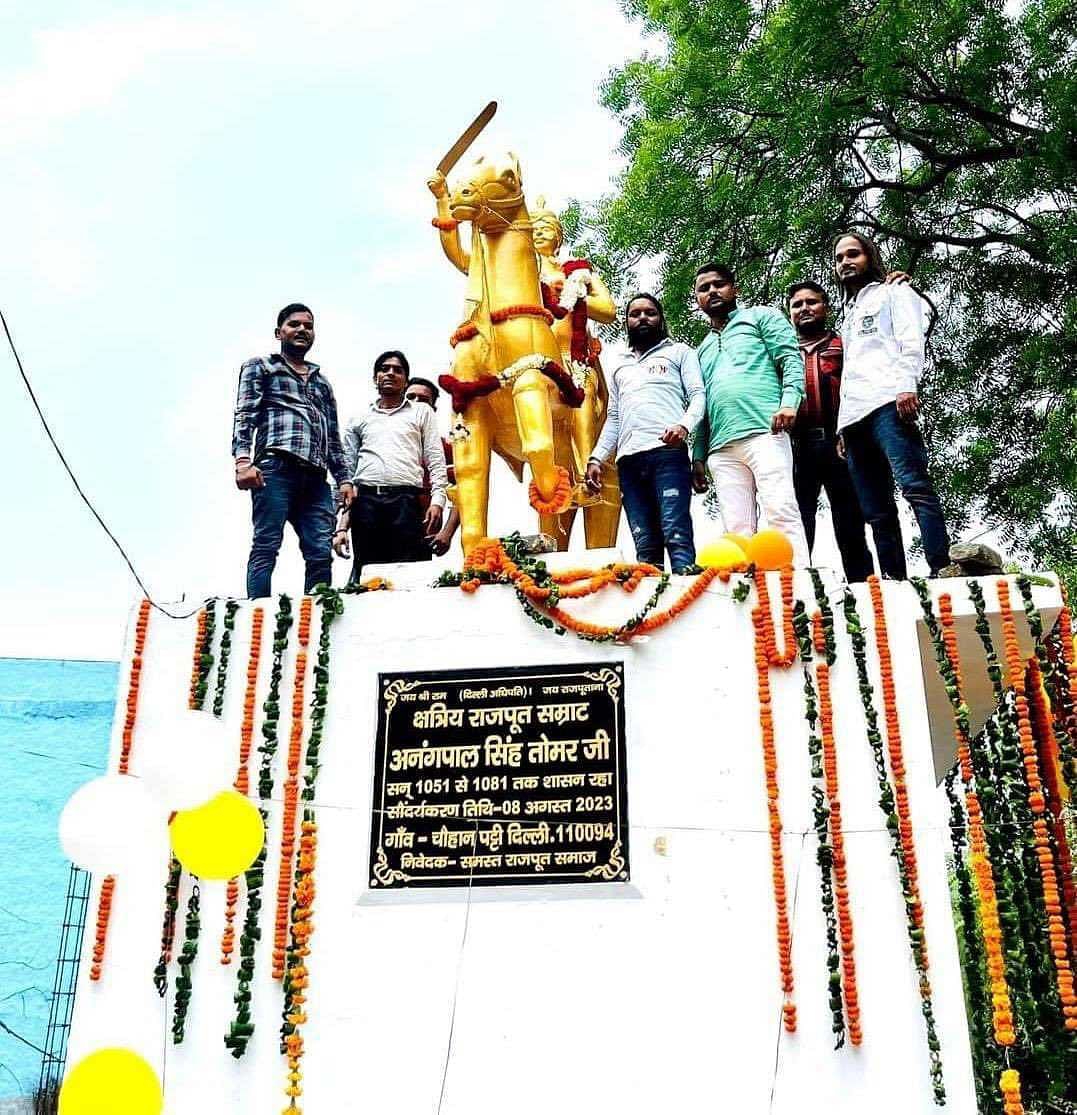
Tapas Chowdhary, the organiser of the rally, said that there is more controversy surrounding the king in the Palwal area. Therefore, a local committee was formed this year and a decision was made to hold the rally.
“Hundreds of people from Meerut, Haryana, Delhi, Rajasthan joined it. When posters of the rally were put on social media, it went viral. Songs related to Tomar were played in the rally and Anangpal Tomar’s big Flex were made,” said Choudhary.
Choudhary said that in the Palwal area, the Tomar surname belongs to the Jat community. “That’s why we are making the youth aware that Anangpal Tomar is ours and not of Rajputs and Gujjars,” he said.
BJP MP Satyapal Singh had called Anangpal Tomar a Jat king in June last year. Soon, his effigy was burnt by some members of the Rajput community.
On 8 August 2021, an event was organised to unveil the statues of Gurjara-Pratihara Dynasty’s Mihir Bhoj and Anangpal Tomar by the Gurjar community in Anangpur village of Faridabad, Haryana. But the Rajput community protested.
The question is not that Anangpal Tomar belongs to any particular caste. No, not at all, he belongs to the whole of India–Deepti Raising Tomar
Chaudhary Sheeshpal Bhadana, the event coordinator, mentioned that BJP MP Brij Bhushan Sharan Singh visited his village in 2021 and asserted that Anangpal Tomar was a Rajput, causing distress to the Gurjar community. “It was only after this that the decision was made by the Gujjar community to install the idol of Anangpal Tomar,” he said.
Deepti Raising Tomar, a spokesperson of Madhya Pradesh Karni Sena said that the Jat and Gurjar communities are trying to claim the Tomar king to earn political fortunes.
“Whether it is Anangpal Tomar, Maharana Pratap, Prithviraj Chauhan or Raja Mihir Bhoj, people have made it a trend to call the great Rajput rulers as of their caste,” she said. “The question is not that he belongs to any particular caste. No, not at all, he belongs to the whole of India. His thoughts and expressions are the heritage of the country. But in the name of caste, calling him yours is like spreading hatred and tampering with history.”
In May 2022, the Akhil Bhartiya Kshatriya Mahasabha (ABKM) had appealed to PM Modi to name the new parliament building after Prithviraj Chauhan, the last Hindu emperor of Delhi, or Anangpal Tomar, the founder of the city.
Tomar’s legacy has become a battleground where everyone wants to engage these days. The conflict spans from historical past to the present, raising the big question of our time: Whose history is it?
“Is searching for the truth a revival? Was the burial of the truth secularism?” said Vijay on bringing the history of Anangpal Tomar back to the fore.
(Edited by Ratan Priya)



